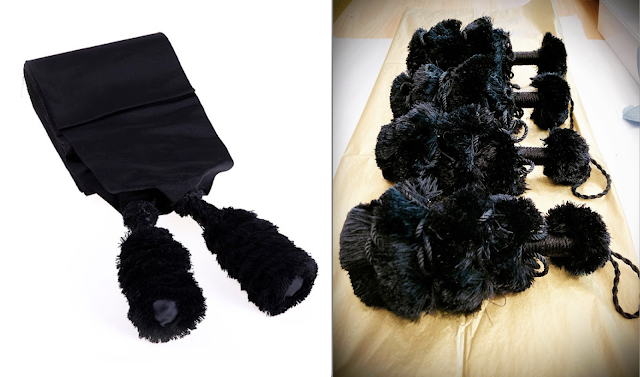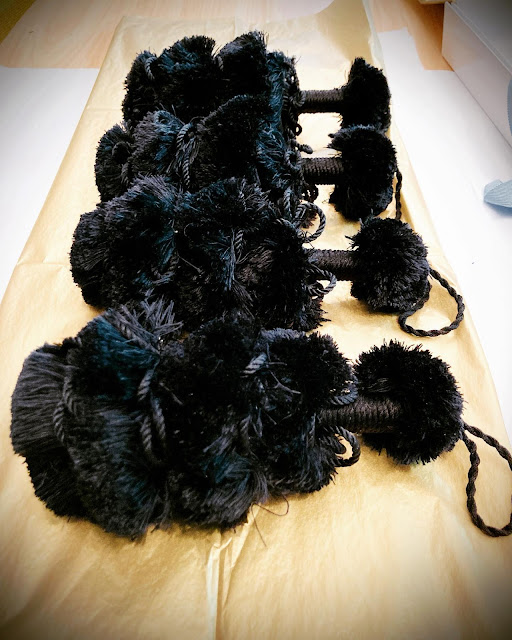Apparently in the Diocese of Rome the tradition was at some point that only a pastor wore a priestly fascia. Today priests everywhere in and outside of the Eternal City are seen wearing the fascia, a comfortable sash that is worn outside the cassock.
The fascia with tassels in Rome is made in Italy by the Roman tailor Gammarelli, in Pius X model. For more information or to order see here. Traditionally the tassels are made of 100% silk as a hand-knotted sham. Truly a nice touch befitting the handsome fascia, a mark of style and elegance.
For the actual fascia different fabrics can be chosen from (silk-blend made on a machine loom, a moire-silk blend made on a machine loom, a silk-blend made on a hand-loom, pure silk, or pure watered silk). In addition, the fascia is made in two different heights: 5.1" and 5.9". It is possible to choose between tassels or fringes to decorate the sash. The final product is made in two colors: black or Roman purple (magenta).
Finally, in 1969 the Vatican Secretariat of State issued a surprise instruction Ut Sive Sollicite, which simplified the choir dress of bishops and prelates depending directly upon the Holy See. "Per Instructionem" was issued in 1970 by the Congregation of Clergy following up on the same subject. I think this was more a move to quell growing media criticism of "pomp" in the Church.
A few distinctions: the fiocchi were axed for prelates in choir dress, but not for other occasions and not for priests. Another subtle distinction: abolished as mandatory does not mean forbidden. It is important to point out that nunquam abrogatum, strictly speaking, Ut Sive Sollicite only pertained to prelates' choir dress, while even for that, local custom can be taken into consideration.
Another theological distinction, art is the expression of the beautiful. In the Catholic tradition, beauty is an ontological reality, a theological category. The search for beauty is not just about mere aestheticism. Art in this case has the capacity to reveal the greatness of the dignity of the office of the priesthood, ultimately manifesting divine beauty.
Further, Sacra Indumenta is also making beautiful fiocchi, created in their workshop studio in Connecticut, depicted below. Very impressive output with such sophisticated materials from the talented ecclesiastical designer Susan-Jayne Caballero. We encourage readers to support her fine work. She has added the nice touch of silk twisted cord accents.
















